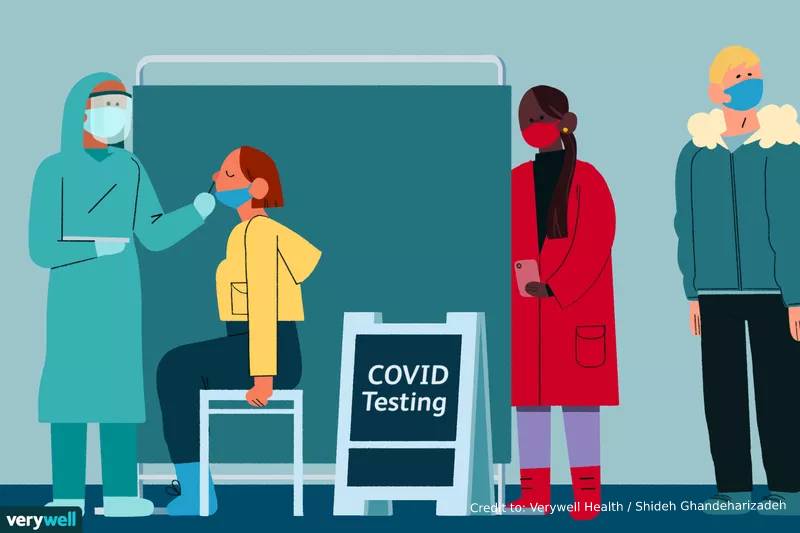
Copyright & credited by Verywell Health
https://www.verywellhealth.com/covid-test-specific-variant-5213226
Genomic sequencing has become an essential public health tool for detecting and tracking variants in the COVID-19 pandemic. While sequencing is commonplace for scientists and researchers, it is not used in clinical settings and individuals with COVID-19 rarely know which variant they are infected with.
“The vast majority of sequencing has been done for surveillance purposes,” Pavitra Roychoudhury, MSc, PhD, an instructor at the University of Washington School of Medicine and research associate at Fred Hutchinson Research Center, told Verywell. “You’re taking random snapshots from the population, and sequencing, and seeing what’s there—as an indication of what might be circulating in the population.”
Now that the Omicron variant is posing a potential threat to vaccine efficacy, some wonder if COVID-19 patients could benefit from knowing which variant they have. If so, would different variants require different treatment approaches?
The answer is complicated. According to Roychoudhury, time, logistics, and lack of clear benefit to a patient are some arguments against telling people with COVID-19 their specific variant.
For starters, the Centers for Medicare and Medicaid Service (CMS) prohibits labs from returning sequencing test results to patients or healthcare providers if the lab is not certified under the Clinical Laboratory Improvement Amendments (CLIA) of 1988. Many labs who report variant-specific data to public health departments aren’t CLIA-certified.1
“It was frustrating for some people, because a lot of samples were being sequenced, but you couldn’t give that information to people,” Roychoudhury said.
Roychoudhury works in a sequencing lab at the University of Washington, which does not communicate with patients directly, but shares results with providers upon request and the Washington public health department.
What Is Genomic Sequencing For?
Genomic sequencing allows scientists to monitor the COVID-19 virus and how it changes over time into new variants. It’s used to learn the epidemiology of the virus at the population level and how it might impact health.2
But even if it was easy to return results, researchers have to evaluate if this would benefit the individual patients. Currently, the answer appears to be: not yet.
“What do you get from returning that result to a person that would change their behavior or change their management in terms of their clinical management?” Roychoudhury said. “Would that change the way you behave? Or is it sufficient for you to know that you have COVID and then act accordingly?”
She added that sequencing for surveillance purposes has so far been very useful, but the benefits of sequencing in a clinical setting are unclear.
In the future, if a variant meaningfully impacted COVID-19 treatment—like becoming resistant to certain antivirals or antibody therapies—or dramatically shifted the course of the disease, clinical sequencing could be useful, Roychoudhury said.
What Can Sequencing Tell Us About the Variants?
Pei-Yong Shi, PhD, chair in innovations in molecular biology at the University of Texas Medical Branch, told Verywell that sequencing data is meaningless if it cannot be paired with information on the variant’s severity and its impact on the population.
“[Variants] need to be very carefully studied, because otherwise it’s just a mutation, it’s just a code,” Shi said. “You can speculate a little bit based on the knowledge of the closer-related [mutations], but you really have to do experiments to find out what is the impact.”
He added that there are three things to look at when evaluating a variant: its sensitivity to vaccination, transmissibility, and disease severity.
Shi leads the Shi Lab where his team uses sequencing data to evaluate variants based on these criteria. The lab also works closely with Pfizer-BioNTech to test the efficacy of their COVID-19 vaccine.
When testing vaccine efficacy against variants, Shi uses a system called the reverse genetic system, which was developed by his lab. With this system, he is able to engineer a version of the virus in a petri dish, incorporating genes and amino acids into the structure. He can engineer different variants, too, by switching out certain amino acids to match mutations in the variant’s genomic sequence.
“This is the most important tool to study the virus because once you have that system, you’re able to engineer or make changes on the genetic footprint of the virus,” Shi said.
Once the desired variant has been created, Shi uses different methods to gauge vaccine efficacy. In one, he inserts a “green gene” which does nothing to change the composition of the virus except for turning it green. If the vaccine is working, the green color would disappear.
Shi has previously used the reverse genetic system to test vaccine efficacy against variants, and he is currently using it to determine if boosters provide sufficient protection against Omicron. If not, his lab will consider the efficacy of an Omicron-specific vaccine.
What Will Scientists Do Next?
Research to date does not suggest that different variants affect the trajectory or treatment options for COVID-19. So experts aren’t advocating for all patients to receive their sequencing results just yet.
Going forward, learning the specifics of Omicron’s severity and response to treatment remains a “watch and wait” situation, Roychoudhury said.
As scientists watch the data, conducting experiments will also be crucial in understanding the variant’s impact, Shi added. His lab is planning to test Omicron for transmission rates and disease severity in mouse and hamster models.
“I don’t know whether it will cause equal disease or more severe disease than the previous Delta,” Shi said. “It seems, in the field, that the disease severity has decreased, but it’s too early to make that conclusion.”
“The clear message is: It is more transmissible,” he added, pointing to the available studies on Omicron. “But again, more data is needed.”

2020 HWGB Biotech. All rights Reserved.